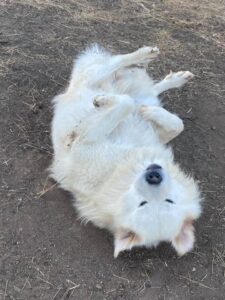Understanding the Role of Livestock Guardian Dogs
Livestock guardian dogs (LGDs) are specially bred canines designed to protect livestock from predators, primarily serving sheep, cattle, and goats. Their purpose is not to herd but to guard, a role they assume instinctively after forming bonds with the animals they protect from a young age. This unique relationship allows LGDs to understand their role within the livestock environment, marking their territory and deterring potential threats through natural behaviors.
Historically, LGDs have been significant in agriculture for thousands of years, with references to their use found in ancient texts, such as the Old Testament and writings by Aristotle and Virgil. Their effectiveness in safeguarding livestock relies heavily on their training and socialization during their formative months, ensuring they develop the necessary skills to interact positively with livestock while maintaining their protective instincts.

Common Breeds of Livestock Guardian Dogs
Several breeds are recognized as the best livestock guardian dogs, each with unique characteristics suited for different livestock and environments. Notable breeds include the Great Pyrenees, which is known for its calm demeanor and historical significance as the “Royal Dog of France”. The Anatolian Shepherd Dog, originating from Asia Minor, is renowned for its loyalty and independence, making it a reliable guardian.
Other prominent breeds include the Maremma Sheepdog, which possesses strong protective instincts and forms close bonds with livestock, and the Komondor, identifiable by its distinctive corded coat that provides camouflage among sheep [3]. Each breed’s traits play a crucial role in determining their suitability for specific farming needs, such as the type of livestock and the environmental conditions they will face.
Training and Socialization of LGDs
Training a livestock guardian dog begins ideally at 4-5 weeks of age, with the expectation of reliable performance by around two years old. Early socialization is vital to prevent aggressive behaviors and to foster positive interactions with both livestock and other animals. Training LGDs should focus on reinforcing positive behaviors and establishing trust between the dog and its environment, ensuring that the LGD can safely perform its duties without posing risks to smaller animals.
Gradual introduction to livestock is essential to help LGDs understand their protective role, reducing stress for both the dog and the animals it will guard. Owners must be committed to ongoing training and be prepared for adjustments as the LGD matures and encounters various situations, as this adaptability is crucial for the dog’s effectiveness.

Benefits of Using Livestock Guardian Dogs
The presence of livestock guardian dogs can drastically reduce livestock losses to predators. Many farms report significant success, with some even achieving zero livestock losses when LGDs are present. Their natural instincts often deter predators through vocal intimidation and aggressive posturing, effectively securing the safety of the herd.
Additionally, LGDs contribute to sustainable farming practices by minimizing the need for lethal predator control measures, promoting a healthier ecological balance. Beyond their protective role, these dogs also serve as companions, enhancing the well-being of both livestock and farmers. The bond they form with the herd not only improves the overall welfare of the animals but also creates a more cohesive environment for livestock management.
Health Considerations for LGDs
Like all breeds, livestock guardian dogs are susceptible to specific health issues, with hip dysplasia and obesity being common concerns that can affect their lifespan. Typically, LGDs have a lifespan of 10 to 12 years, although this can vary based on breed and care. Regular veterinary check-ups are essential for maintaining their health, alongside a balanced diet and adequate exercise to prevent issues related to boredom and inactivity.
Preventive care measures, including vaccinations and parasite control, play a critical role in ensuring the long-term well-being of LGDs. Early detection and management of health problems can significantly enhance the quality of life and effectiveness of these dogs as guardians.

Choosing the Right Livestock Guardian Dog
When selecting a livestock guardian dog, potential owners should consider breed characteristics, the size of their herd, and the specific predators present in the area. It’s crucial to choose well-bred LGDs from reputable sources to avoid behavioral issues and ensure compatibility with existing livestock. The number of LGDs required can vary, with recommendations suggesting at least one dog per 50-100 animals, depending on environmental factors.
Understanding the specific needs and temperament of each breed will aid in making informed decisions, ensuring the chosen LGD can effectively protect its livestock while adapting to the farm’s dynamics. Consulting with experienced LGD owners or trainers can provide valuable insights into the selection process, enhancing the chances of success in livestock protection efforts.

The Importance of Livestock Guardian Dogs in Sustainable Farming
Livestock guardian dogs play an essential role in sustainable farming practices, significantly reducing livestock losses and promoting wildlife management. Their unique traits and needs, when understood and catered to, can lead to successful outcomes for both farmers and their animals. LGDs foster a deeper connection between farmers and their livestock, encouraging ethical farming practices and enhancing animal welfare.
With changing agricultural practices leading to a decline in traditional livestock guardian breeds, awareness and preservation efforts are increasingly necessary. Educating new farmers about the benefits and requirements of LGDs can improve the success of livestock protection initiatives and promote a more harmonious coexistence with local wildlife.

